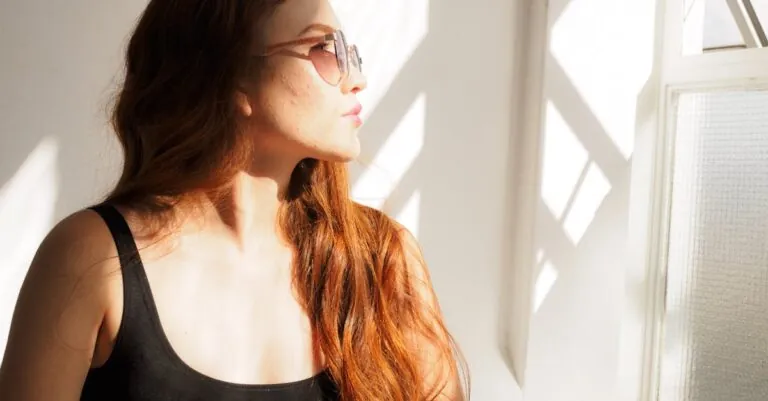In a world bursting with vibrant hues and eye-popping shades, the neutral color palette quietly steals the show, proving that sometimes less really is more. Imagine stepping into a space where soft beiges, warm grays, and calming whites create a serene backdrop, allowing your personality to shine without the distraction of clashing colors. It’s like wearing a classic little black dress—always in style and effortlessly chic.
But don’t let the word “neutral” fool you. This palette packs a punch, offering endless versatility and sophistication. Whether it’s for your home, wardrobe, or branding, embracing neutrals can elevate any aesthetic. So, if you’re ready to ditch the color chaos and embrace a palette that whispers elegance, stick around. The world of neutrals is waiting to transform your space and style into something truly timeless.
Table of Contents
ToggleUnderstanding Neutral Color Palette
Neutral colors serve as a foundation for various design elements, offering versatility and elegance. They create serene environments, appealing to those seeking a calm aesthetic.
Definition of Neutral Colors
Neutral colors include shades such as white, beige, gray, and taupe. These colors lack strong hues, emphasizing subtlety and sophistication. They complement other colors by providing balance and harmony. Often, neutrals act as anchors for vibrant accents in spaces. Designers frequently utilize neutral tones to create elegant backdrops that enhance other elements.
Importance of Neutral Colors in Design
Neutral colors play a crucial role in design by fostering a timeless appeal. Designs featuring neutral palettes remain relevant across trends and seasons. They establish a sense of calm, making spaces more inviting. By using neutral colors, designers can highlight textures and shapes without distraction. Moreover, neutrals adapt seamlessly to various styles, from modern minimalism to classic elegance. This flexibility contributes to their widespread popularity in both interior and fashion design.
Benefits of Using a Neutral Color Palette
Utilizing a neutral color palette offers numerous advantages in design aesthetics. It enhances the overall ambiance while ensuring a sophisticated appeal across various applications.
Versatility in Different Spaces
Neutral colors adapt remarkably well to different spaces, making them suitable for various design themes. Whether used in living rooms, bedrooms, or offices, these colors provide a versatile backdrop that readily complements other elements. Accent pieces in vibrant hues stand out against a neutral background, adding visual interest without overwhelming the senses. In retail settings, a neutral palette can create a calming shopping environment, allowing products to shine. Overall, they fit seamlessly in contemporary, traditional, or minimalist designs, showcasing their flexibility in various contexts.
Timelessness and Trend Longevity
Neutral colors possess a timeless quality that withstands changing design trends. Their subtlety makes them less susceptible to becoming outdated, maintaining visual appeal over years. Homeowners and designers often choose neutrals for long-term investments, knowing they won’t conflict with future decor updates. Additionally, trends in fashion leverage the same neutral tones for versatile wardrobes that last through seasons. By establishing a solid foundation with neutral shades, personal and professional spaces exude a sense of elegance that never fades.
How to Effectively Use a Neutral Color Palette
Utilizing a neutral color palette enhances sophistication in various designs. It offers a foundation that allows for versatility and creativity.
Combining Neutral Colors with Accent Colors
Combining neutral colors with accent colors creates a harmonious balance. For instance, pairing beige with deep navy adds depth and interest. Gray walls might serve as a backdrop for vibrant artwork, drawing the eye without overwhelming the space. Consider using accent pieces in bold colors like teal or mustard. These shades pop against neutrals, making them stand out. This approach allows for personal expression while maintaining a serene environment.
Choosing the Right Shades for Your Space
Choosing the right shades significantly impacts the atmosphere of any space. A light gray can make a small room feel airy, while a darker taupe adds warmth and coziness. Assess natural light when selecting shades; bright spaces can carry darker tones, while dimmer areas benefit from lighter hues. Use samples to test how colors interact in different lighting. Spaces like bedrooms may require calming tones, while living areas can welcome slightly bolder shades. Each decision contributes to the overall ambiance and functionality.
Popular Neutral Color Combinations
Neutral color combinations create appealing atmospheres that enhance various design applications. Popular pairings include warm and cool neutrals, each contributing unique qualities to a space.
Warm Neutrals
Warm neutrals, including shades like beige, taupe, and cream, evoke a sense of coziness. These colors work well in living spaces, adding warmth and comfort. Pairing beige with earthy tones, such as terracotta or muted greens, enhances a natural vibe. Taupe complements darker woods and fabrics, enriching depth in the design. Incorporating warm neutrals in a room creates inviting spaces, balancing with vibrant accents like mustard or burnt orange.
Cool Neutrals
Cool neutrals like gray, soft white, and icy blue offer a calming influence. These shades suit minimalist designs, presenting a sleek and modern look. Gray works well with pastels or bolder jewel tones, establishing a sophisticated contrast. Pairing soft white with navy or slate enhances both elegance and depth. Cool neutrals can transform a space into a serene retreat, proving effective in bedrooms or offices where relaxation is key.
A neutral color palette stands as a testament to timeless elegance and versatility. Its ability to create serene environments while allowing for personal expression makes it a go-to choice for many. By embracing neutrals in home decor fashion or branding individuals can cultivate spaces and styles that exude sophistication.
The subtlety of neutral shades provides a perfect backdrop for vibrant accents enhancing overall aesthetics. Whether it’s warm tones that invite comfort or cool shades that promote tranquility neutrals adapt seamlessly to various design needs. This adaptability ensures that neutral palettes remain relevant regardless of changing trends.
Ultimately choosing a neutral color palette is not just about aesthetics; it’s about creating an atmosphere that resonates with one’s personal style while maintaining a sense of harmony and balance.






